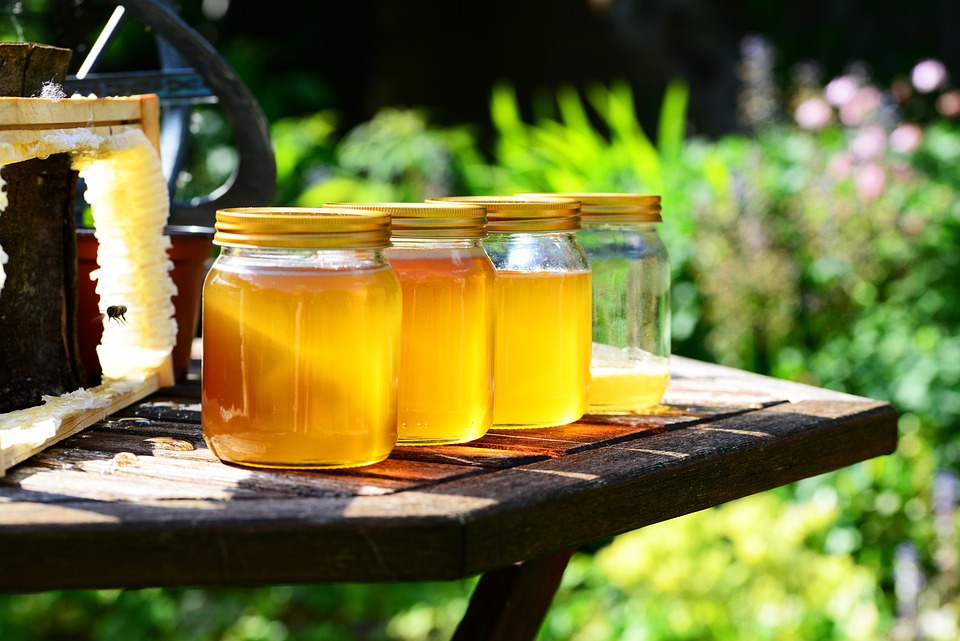Once a year, usually in late summer, depending on rainfall and forage availability, honey is harvested from the hives.
In Part 9 we learned that the hive consists of the brood chamber and the super chambers. The bees build their comb onto the wooden frames that are fitted into the super chamber. They store honey in the cells and cover the full cells with a cap of wax.
Capped honey is known as ripe honey. Since extracting honey is quite an involved process, which includes removing the frames from the super chamber and scraping off the wax cappings before the honey can be extracted, the job is usually attempted only once a year and then only when surplus honey is available in the super. Remember that a colony needs about 60 kg of honey a year to survive, so do not remove all their food until you are sure they have sufficient for themselves.
Honey extraction
The extraction of honey refers to the removal of honey from the honeycomb so that it is isolated in a pure liquid form. Usually, the bees store the honey in a honeycomb which they build from wax on the wooden frames which are vertically inserted from the top into the super chamber(s). The honey is normally harvested in the late summer when most of the cells on the supers will be filled with honey. On a filled frame, the cells will be capped over by the bees for storage. These are the frames from which you can harvest honey.
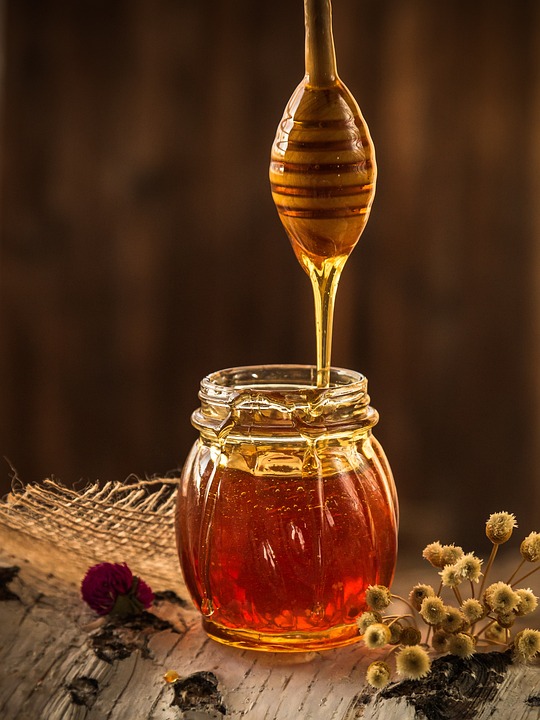
Harvested honey in a glass jar. (Source: Pixabay)
Centrifugal extraction
Centrifugal extraction is most widely used by beekeepers to remove honey from the combs. This type of extraction is suitable with vertical hives, which are normally furnished with frames with artificial support, such as wires that hold the wax sheet in position.
Process
The first step in the extraction process is to break or remove all the cappings. This can be done using an automated uncapper machine, but the non-commercial beekeeper with only a few hives will remove the wax manually with a capping knife and or pronged capping fork. To help the process, the knife is often heated. The combs are held at an angle over a dish and cut off with a hot knife. The cappings are rich in honey, which can be slowly drained off with a bit of heating to melt the wax without heating the honey excessively. The cappings are often used to make candles or other wax products, or recycled into sheets of foundation to use again. Some beekeepers also harvest the propolis before uncapping the combs.
Propolis, the resinous material that bees gather from plants to glue the frames together, is used for its medicinal properties. The uncapped frames are then placed in a honey extractor, which spins them to remove the honey from the cells by centrifugal force. The frames must be correctly loaded to ensure the honey flows out of the cells during extraction. The extracted honey will contain bits of wax and must be filtered through a screen to remove it and then settled in a settling tank to provide clean, clear liquid honey. Not all honey is suitable for harvesting. Crystalised honey is left on the frames.
Also, any uncapped honey will be impossible to spin out and must be left in the hive. Only hives that are at least 50% capped should be harvested. The extraction process is typically done inside a specialised room, or honey house that is equipped with all the necessary tools and that can be easily cleaned. It helps if the room is heated since hot honey flows faster. The small-scale beekeeper will not necessarily have the luxury of a honey house, but any space that can be used to harvest the honey and can be properly cleaned up afterwards to keep honey-loving creatures away, will be suitable.
Bottling
Different plants visited by the bees to collect nectar will result in different colours of honey. Bottle the different kinds of honey separately where possible and label the bottles accordingly. If you have a small amount of honey, use recycled glass bottles for your own use and for sale to neighbours and at a local market. When you have more honey and want to sell it more professionally, you can use glass bottles which can be recycled as used glass. There are also plastic squeeze bottles available for sale. You can also sell honey in bulk in larger containers to somebody who will probably fill smaller jars and mark up the price.
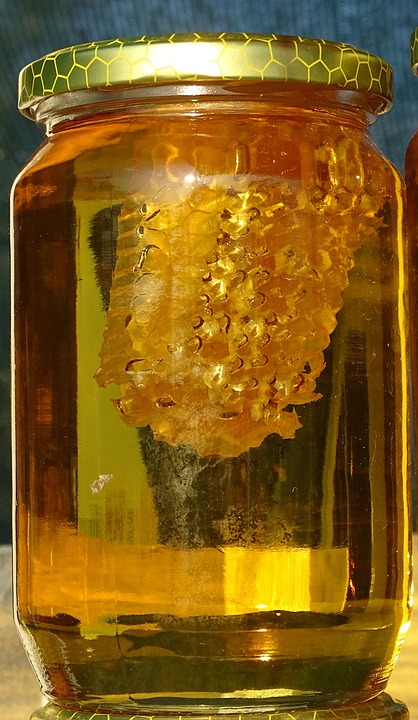
Honey sold in a jar with a piece of comb inside is called chunk honey. (Source: Pixabay)
Marketing
There are many ways to distinguish your honey from others. Some beekeepers include neatly cut honeycombs into their jars of honey, which is called chunk honey. Others market their honey as raw or unfiltered, where no extra heating of the honey has been done. Choice-grade honey is the other option. You can design and have your own labels printed to stick on the jars. The labels must clearly state the type of honey, such as eucalyptus or fynbos honey, your name and contact details, and how much honey the jar contains. Check with all the labelling requirements as stipulated in food labelling legislation. If you have a lot of honey on a regular basis, you can market your honey online. Lots of people also market on Facebook Marketplace.
To determine the price of your honey, you can check prices for online honey sales on Google, at your local market or at country fairs. If you can not afford a market stall at a country fair yet, you can ask an existing seller to share his or her stall for a percentage of your sales. You can benefit from the existing clients, and your honey can in turn attract new customers.
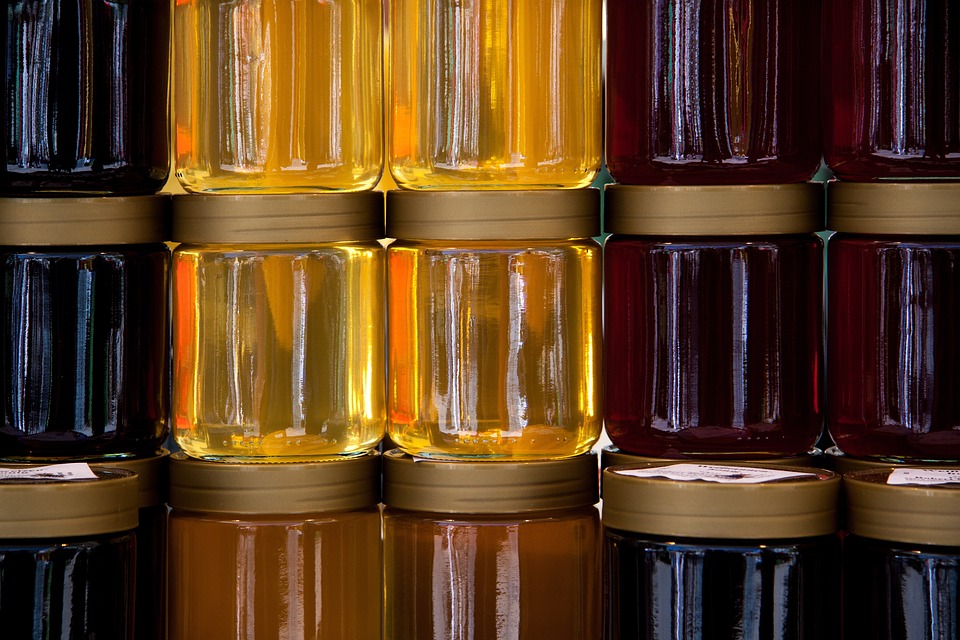
Nectar from different plants yields honey in different colours. (Source: Pixabay)
Formal structures and legislation
Registration
According to the Agricultural Pests Act, 1983 (Act No. 36 of 1983) – Control Measures R858 of 15 November 2013 relating to Honeybees, any person who keeps, owns, or is in charge of a colony of honeybees, whether for commercial, purposes, as a hobbyist or as a bee removal service provider, is legally required to register annually with the Department of Agriculture, Forestry and Fisheries (DAFF) as a beekeeper between 1 January and 31 March of each year.
You can find the registration form here: https://www.bhive.co.za/daff-beekeeping-registration/
SABIO
The South African Beekeeping Industry Organisation (SABIO) is an organised body representing the beekeeping industry in South Africa. It represents beekeeping interests at national level. It acts as the representative of the beekeeping industry in dealings with the government, presides as a consultative spokesperson on all forums affecting the industry and agriculture, and strives to set and maintain world-class standards in apiculture.
All associations and interest groups should be registered with Sabio and submit to the regulations in the interest of the industry. The Sabio website contains a wealth of information on legislation for beekeeping in the country.
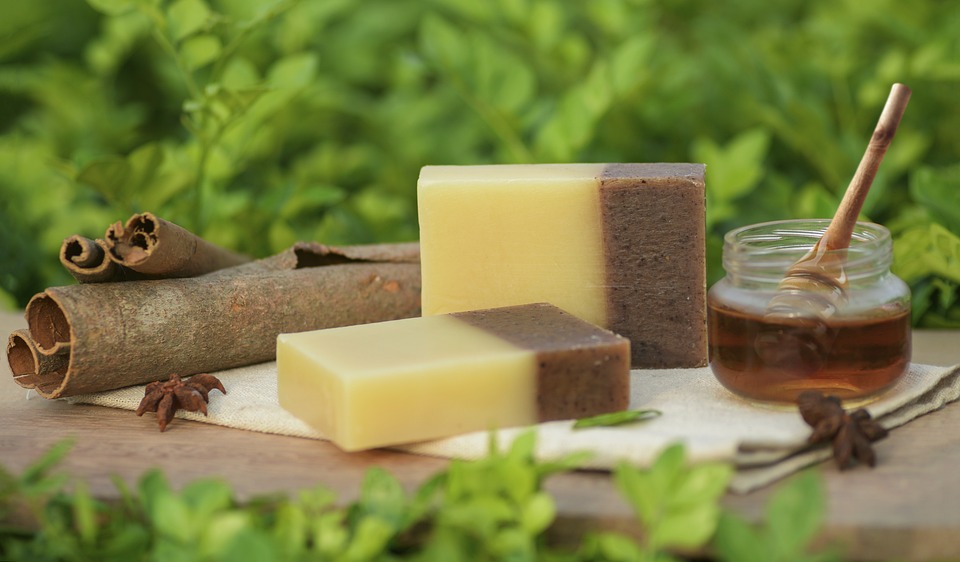
The wax cappings are used to make different products, such as this soap. (Source: Pixabay)
Sources
Anderson, R.H., Buys, B., Johannsmeier, M.F. (2014). Byeboerdery in Suid-Afrika. Department van Landbou-tegniese Dienste Bulletin no. 394, 1978. Hersiene uitgawe.
Beekeeping Associations. Sabio https://sabio.org.za/beekeepingassociations/
Blackiston, H. (2021) How to Brand and Sell Your Own Honey. Beekeeping for Dummies https://www.dummies.com/article/home-autohobbies/hobby-farming/beekeeping/how-to-brand-and-sell-your-own-honey-188387/
How To Sell Your Honey for Profit (Plus Tips for Success). (n.d.) Backyard Beekeeping https://beekeeping101.com/how-to-sell-honey/
Legislation. Sabio https://sabio.org.za/legislation/

